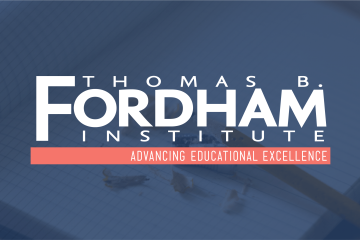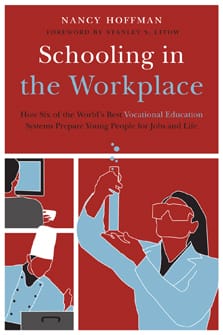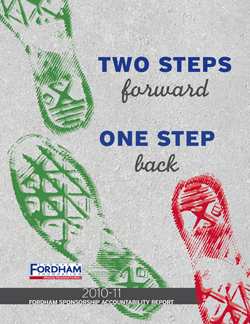
Does School Autonomy Make Sense Everywhere? Panel Estimates from PISA
Which came first, development or autonomy?

Which came first, development or autonomy?










As education governance rises on the policy agenda, should American reformers be looking toward greater decentralization or centralization—or a judicious mix of both? Eric Hanushek, Susanne Link, and Ludger Woessmann argue that, in a country like the U.S., greater school-level autonomy offers the best shot at boosting student achievement. Using the four available rounds of PISA data (2000-09), the trio compared achievement in forty-two countries with their levels of school-based autonomy, as reported by principals. (Specifically, they analyzed autonomy of academic content, personnel decisions, and budget allocations.) Dividing the countries up by GDP per capita, the authors find that developed nations tend to see spikes in student achievement when school autonomy increases, while scores in developing countries drop with greater decentralization. Autonomy works when local leaders have both an interest in making decisions that benefit students and the capacity to do so. The stronger governmental institutions and the rule of law, the logic goes, the more likely leaders are to align their interests to those of their students. Thus, in richer countries, pairing greater autonomy with test-based accountability magnified the bump in scores. In short, how education is governed matters for students. But we told you that already.
| Click to listen to commentary on this NBER paper from the Education Gadfly Show podcast. |
|
Eric A. Hanushek, Susanne Link, Ludgar Woessmann, “Does School Autonomy Make Sense Everywhere? Panel Estimates from PISA” (Cambridge, MA: National Bureau of Economic Research, November 2011). |

 In February, the “college-for-all” movement was
dealt a mighty blow with the publication of Harvard GSE’s Pathways
to Prosperity report. This new book from Nancy Hoffman, VP of Jobs for
the Future, offers yet another forceful whack. (Insider power-couple scoop: Ms.
Hoffman is married to a lead author of Pathways.)
Though a seemingly admirable crusade, she contends, “college for all” is ill-advised
for a country interested in having an “appropriately skilled and employed
workforce.” (It’s also an anomalous goal, not shared by other countries.) As Hoffman
explains, unemployment rates currently soar, even as employers complain of
difficulty finding candidates with the right skill set. Americans have often
shied away from promoting Vocational Education and Training (VET) programming,
viewing it as classist, even elitist—a system that perpetuates social and
fiscal disparities. However, strong VET initiatives in other nations are
redefining post-secondary options for students. These programs are thoughtful,
rigorous pathways to careers—no longer the “throwaway” tracks for the least
effective students. And they seem to be effective: In Switzerland, 42 percent
of students attaining the highest scores on the PISA exam chose VET enrollment.
High-performing Australia enrolls about 60 percent of its eleventh- and
twelfth-year students in VET programs. Through six case studies, Hoffman
articulates lessons for America as we think through expanding our own
work-based learning programs. The biggest: Ensure constant employer
participation in curricula and certification development and in apprenticeship
placements. For those ready
to revisit the “college-for-all” mandate, this book provides a useful
starting point.
In February, the “college-for-all” movement was
dealt a mighty blow with the publication of Harvard GSE’s Pathways
to Prosperity report. This new book from Nancy Hoffman, VP of Jobs for
the Future, offers yet another forceful whack. (Insider power-couple scoop: Ms.
Hoffman is married to a lead author of Pathways.)
Though a seemingly admirable crusade, she contends, “college for all” is ill-advised
for a country interested in having an “appropriately skilled and employed
workforce.” (It’s also an anomalous goal, not shared by other countries.) As Hoffman
explains, unemployment rates currently soar, even as employers complain of
difficulty finding candidates with the right skill set. Americans have often
shied away from promoting Vocational Education and Training (VET) programming,
viewing it as classist, even elitist—a system that perpetuates social and
fiscal disparities. However, strong VET initiatives in other nations are
redefining post-secondary options for students. These programs are thoughtful,
rigorous pathways to careers—no longer the “throwaway” tracks for the least
effective students. And they seem to be effective: In Switzerland, 42 percent
of students attaining the highest scores on the PISA exam chose VET enrollment.
High-performing Australia enrolls about 60 percent of its eleventh- and
twelfth-year students in VET programs. Through six case studies, Hoffman
articulates lessons for America as we think through expanding our own
work-based learning programs. The biggest: Ensure constant employer
participation in curricula and certification development and in apprenticeship
placements. For those ready
to revisit the “college-for-all” mandate, this book provides a useful
starting point.
|
Nancy Hoffman, Schooling in the Workplace: How Six of the World’s Best Vocational Education Systems Prepare Young People for Jobs and Life (Harvard Education Press, Cambridge, MA, 2011). |

Most of the time, Congressional hearings on federal education research are just an opportunity for various interested parties to plead for more money. A couple of weeks back, however, Rep. Duncan Hunter and the House Subcommittee on Early Childhood, Elementary, and Secondary Education held an unusually candid and (I hope) fruitful review of this crucial but not-very-sexy policy domain. Terrific witness list—ISUSand an outstanding testimony by former IES director Russ Whitehurst, now of Brookings, who did more than defend his own solid track record in that role. He pulled no punches regarding research quality (needs to be raised, not lowered), the American Educational Research Association (another self-interested and greedy lobby), the (complex but crucial) relationship between IES and the rest of the Education Department, and the hopelessness of the regional education laboratories. He also urged Congress not to “try to dictate how states and LEAs should use findings from research,” about which he’s mostly right. What he might not be right about are the late, lamented Reading First program and the future relationship between IES and the National Center for Education Statistics. Have a look for yourself.
|
Grover J. “Russ” Whitehurst, Testimony on the Federal Role in Education Research: Providing Relevant Information to Students, Parents, and Educators (Washington, D.C.: Brookings, November 16, 2011). |

Mike and Rick come out swinging after their Thanksgiving respites. In Pardon the Gadfly, they attack our current governance model, sympathize with Newt Gingrich, and consider what to do about private donations to public schools. Amber brings autonomy down to the school level and Chris requests a State of State Moral Standards.

 Since
Ohio’s first charter schools opened in 1997, they have been at the center of
some of the state’s hottest and most politically contentious debates about
education. The past year brought still more examples of charter-linked
controversy.
Since
Ohio’s first charter schools opened in 1997, they have been at the center of
some of the state’s hottest and most politically contentious debates about
education. The past year brought still more examples of charter-linked
controversy.
The 2010 elections were very good for Buckeye Republicans, with John Kasich winning the governor’s race (replacing Ted Strickland who had been a charter adversary throughout his four-year term). Republicans also took control of the House while expanding their Senate majority.
Almost immediately, GOP lawmakers set out to make the Buckeye State more inviting to charter schools. Governor Kasich’s budget proposals offered a solid plan for not only increasing the number of charters in Ohio but also boosting their quality. Crucial elements included:
This vision for quality along with quantity excited us and many others in Ohio and beyond. The Buckeye State was finally positioning itself to become a true leader in the charter sector rather than a troubled sector plagued by too many mediocre schools.
Then the House issued its version of the budget in April and with it came an enormous risk that charter advocates in Ohio would again shoot themselves in the foot—and their pupils in the heart. The House proposal, pushed by friends of school choice, sought to neutralize authorizers (including Fordham) and governing boards in the name of efficiency on behalf of well-heeled, profit-maximizing school operators. The House’s budget would have done away with any meaningful accountability for school operators just when it seemed like we might finally move in the right direction.
We were not the only ones upset by this. The larger charter-school community rallied around the need for charter quality in Ohio: The National Alliance for Public Charter Schools, the National Association of Charter School Authorizers, and the Ohio Alliance for Public Charter Schools, among others, denounced the House bill.
After much political jockeying and uncertainty, the Senate agreed with the critics and ultimately purged most of the troubling language from the bill, but not without conflict, late nights, much sweat, and plenty of spent political capital.
Ohio’s charter-school law came out of the budget sausage-maker stronger on some fronts but weaker on others. Improvements included requiring all charter schools and their authorizers to be rated by their academic Performance Index (PI) scores. Henceforth, authorizers with the lowest-achieving 20 percent of students according to the PI cannot open new schools until they improve or close the ones they have. Further, the budget allows new charter schools to open in all districts that rank in the bottom 5 percent. (Previously, Ohio confined charter start-ups to just the Big Eight school districts—the state’s largest eight cities—and those districts rated Academic Emergency and Academic Watch.)
Unfortunately, the law also requires the Ohio Department of Education (ODE) to sponsor directly charter schools once again. (The legislature fired it from that same role in 2003 after a blistering report from the then-Auditor of State chronicling the many failings of the department as a sponsor.) There is no evidence that the department or its board wants the job of authorizing schools; in fact, they now find themselves facing potential conflicts of interest, the most bizarre of which is that the agency’s Office of Community Schools must now hold the same agency’s Office of School Sponsorship accountable for the performance of its schools and take corrective action against itself as needed. Far better would be to have the department continue to eschew direct sponsorship while giving it the resources and mandates to hold all authorizers accountable for the performance of their schools. One can only assume that ODE was put back into the role of sponsor because some operators felt they would authorize schools and not be too demanding or persnickety about performance.
Fordham’s charter-school portfolio: Improving schools—but not fast enough
In this uncertain environment, Fordham has continued to operate as a charter-school authorizer, a role it has performed in Ohio since July 2005. Fordham took on this responsibility, and continues to embrace it, because we believe there was—and still is—a dearth of quality authorizers in the state. We also felt that we could help recruit some decent models to needy neighborhoods and support the expansion and growth of some of those already here. It has been a tough six years, which we chronicled last year in Ohio’s Education Reform Challenges: Lessons from the Frontlines.
Since Fordham first started as an authorizer, our sponsorship portfolio has evolved considerably. We began with ten schools (all in the Dayton-Cincinnati area) that collectively served about 2,700 students—all but three of which we inherited from the Ohio Department of Education after it was booted from sponsorship in 2003. Most of them were academically troubled. Since then, we’ve had six schools leave our portfolio, either through closure or by jumping to other sponsors; we’ve opened one new school only to see it close after a year; and we’ve successfully birthed two new schools. We currently sponsor only four of the ten schools that originally signed with Fordham in 2005.
How did Fordham’s own schools fare in 2010-11? Five of six Fordham-sponsored schools made academic gains in 2010-11. Three were rated Effective (equivalent under the Ohio accountability system to a grade of B), two Continuous Improvement (C), and one Academic Watch (D). Still, while we don’t currently have any schools in Academic Emergency, 11 percent of the students in our portfolio were enrolled in a D-rated school (Springfield Academy of Excellence). Fifty-two percent attended schools rated C while 37 percent attended schools that earned Bs. This puts us somewhere in the upper-middle of sponsors in Ohio. Good, but not good enough.
When it comes to academic value added by schools, 57 percent of students in Fordham schools made “above expected” growth in 2010-11, using Ohio’s relatively generous (and rather opaque) system for making such calculations. However, 38 percent did not meet expected growth in 2010-11. Compared to the other nine largest authorizers (by number of students), Fordham claims the highest percentage of students making “above expected” growth—but also the third highest percentage of students falling in the “below expected” category. Again: good, but not good enough.
In Ohio’s Big Eight cities, approximately 80 percent of schools (district and charter) were able to help their students meet or exceed expected value-added gains, but less than five percent (twenty-five out of 510) hit the state’s PI-score target.
Ohio’s urban schools have done a decent job of meeting or exceeding value-added growth, but few are reaching state proficiency expectations. We believe this is in part because Ohio’s accountability system has been watered down over the years to make it easier on schools to meet or exceed state expectations and receive decent ratings. This is in fact a belief shared by state superintendent Stan Heffner who has, to his credit, been traveling the state and making the case that Ohio’s current accountability system is plagued by grade inflation.
Sobered and a bit battered, Fordham continues as an authorizer of Ohio charter schools, and a vigorous participant in the state’s larger education policy debates. We’re constantly exploring new options including, at this writing, working to help some high-quality schools in Ohio expand their efforts (we expect to authorize two new start-ups in 2012 and two more in 2013). Meanwhile, we’ve learned a lot about how hard all of this work is to do well, stymied further if state legislation is poorly written, and we think it critical to share the lessons along the way—even those lessons we might not really have wanted to learn.


It's my money; I'll do what I want.
Photo by sushi♥ina
Do well-heeled parents have the right to heap donations on their students’ public schools to pay for teacher aids, extra library hours, or a media lab? Of course—though, as the Los Angeles Times explains, expect a fight. This week’s example comes from the Santa Monica-Malibu Unified School District, where the PTA at one Malibu elementary school adds over $2,100 per pupil to the school’s coffers compared with a mere $96 raised at another district elementary twenty miles down the road. The school board is mulling a plan to centralize all PTA donations, allowing for more equitable student funding. Our position on school financing is clear: Funding formulas should include weights that ensure that more public resources be allotted to higher-need students. But, when it comes to private dollars, districts and states should tread carefully. If parents want to donate more, so be it. Barring wealthy parents from education-related giving will only push them to invest instead in private extracurriculars—or even private schools—thus completely undermining the equity-based intentions of the embargo. Instead of this tack, here’s another solution for the Santa Monica-Malibu Unified School District: Ride the current wave of “philanthropy philosophy.” (Think: TOMS Shoes, in which you purchase one item for yourself at a higher cost, so that the second can be donated.) Or go one further, adopt a “sister schools” policy—look to D.C. for an example here—linking wealthy schools (and their donations) to a less affluent building. All in all, that would be pretty close to a win-win.
| Click to hear more ideas on how to handle private donations to public schools from the Education Gadfly Show podcast. |
|
“Public Schools, Private Donations,” Los Angeles Times, November 27, 2011. |


If I had a hammer...
Photo by TheFixer
Newt Gingrich has issued some crazy statements since he first took public office in 1979. Yet his latest claim—that we shouldn’t be “entrapping kids in…child labor laws, which are truly stupid”—isn’t one of them. In a speech at Harvard’s Kennedy School, Gingrich suggested a “work study” program for K-12 education: Students could provide low-cost alternatives to unionized janitors, giving these youngsters work experience, money, and pride in their schools. This proposal to slacken child-labor laws has drawn plenty of headlines, and even more scorn. But there’s something to his logic. Nonprofits like YouthBuild and the ISUS charters in Dayton, OH, in which students work to complete high school while learning construction skills, already offer successful models of dual academic/job-training programs. The Cristo Rey network of Catholic schools allows their low-income students to offset tuition costs—and gain practical job skills—through once-a-week corporate internships. These models provide more than a paycheck and some on-the-job carpentry or accounting skills: They give students a better sense of the working world than any personal-finance or economics course ever could. Gadfly isn’t advocating for eight-year-olds to don hard hats on Alaska’s oil pipeline—and he doubts that’s what Newt had in mind, either. But there’s value in skills training and career preparation. Be careful not to blithely dismiss creative ideas like this.
| Click to listen to commentary on Gingrich's plan from the Education Gadfly Show podcast. |
|
“Newt Gingrich: Child Labor Laws are ‘Stupid’,” Huffington Post, November 21, 2011. “Gingrich: Changing Child Labor Laws Would Improve Schools,” Education Week, November 22, 2011. |

For months, leaders from LAUSD and the UTLA have stalled within a deep tunnel of negotiations, unable to reach consensus on, well, anything. This week, light broke at the end of that dark passageway: Los Angeles Superintendent John Deasy and the newly elected union president, Warren Fletcher, have reached a partial agreement. And it’s an exciting one: Under the new pact, district schools could exercise charter-like autonomy over hiring, curriculum, and work conditions. If a school wants to diverge from current norms by, say, altering its salary structure or length of day, neither union nor district officials can object. (Take note of this innovative approach for combating union strong-arming: Pitch the reforms to teachers as a respite from meddling district policies, not just cumbersome union ones.) So, what catalyzed this union change of heart? Pressure from charter schools—which hold a 10 percent market share of L.A.’s student enrollment. According to Fletcher, “There’s been a lot of focus on out-of-district resources and answers. This is the beginning of moving back to some semblance of balance.” Before the agreement becomes official, though, it must be ratified by union membership. Here’s hoping; what a worthy experiment that would be.
|
“Individual Los Angeles Schools Gain New Autonomy,” by Howard Blume, Los Angeles Times, November 29, 2011. |


Check the original charter-school blueprint.
Specs say "choice for all."
Photo by Will Scullin
As originally conceived twenty years ago, charter schools were to offer alternatives to the traditional public-school model—maybe Betsy wants a school that focuses more on drama than the football team or Davey wants one that prioritizes STEM learning. Somewhere along the way, however, many states restricted charters to “high need” communities awash in disadvantaged kids and failing schools. As a result, 70 percent of charter students are on free or reduced-price lunch, and most charters are urban. But that’s starting to change. Greater numbers of suburban students are venturing into the halls of charter schools—central Ohio alone had more than 10,000 suburban and rural students attend charter schools last year—sparking what Fordham’s Terry Ryan dubbed a “second generation” of charters. And it couldn’t come fast enough. Like their urban counterparts, kiddos in suburbia deserve the ability to choose schools that are right for them. Just ask any of the original architects of the charter theory.
|
“Charter schools lure suburban kids, too,” by Jennifer Smith Richards, The Columbus Dispatch, November 27, 2011. |

As education governance rises on the policy agenda, should American reformers be looking toward greater decentralization or centralization—or a judicious mix of both? Eric Hanushek, Susanne Link, and Ludger Woessmann argue that, in a country like the U.S., greater school-level autonomy offers the best shot at boosting student achievement. Using the four available rounds of PISA data (2000-09), the trio compared achievement in forty-two countries with their levels of school-based autonomy, as reported by principals. (Specifically, they analyzed autonomy of academic content, personnel decisions, and budget allocations.) Dividing the countries up by GDP per capita, the authors find that developed nations tend to see spikes in student achievement when school autonomy increases, while scores in developing countries drop with greater decentralization. Autonomy works when local leaders have both an interest in making decisions that benefit students and the capacity to do so. The stronger governmental institutions and the rule of law, the logic goes, the more likely leaders are to align their interests to those of their students. Thus, in richer countries, pairing greater autonomy with test-based accountability magnified the bump in scores. In short, how education is governed matters for students. But we told you that already.
| Click to listen to commentary on this NBER paper from the Education Gadfly Show podcast. |
|
Eric A. Hanushek, Susanne Link, Ludgar Woessmann, “Does School Autonomy Make Sense Everywhere? Panel Estimates from PISA” (Cambridge, MA: National Bureau of Economic Research, November 2011). |

 In February, the “college-for-all” movement was
dealt a mighty blow with the publication of Harvard GSE’s Pathways
to Prosperity report. This new book from Nancy Hoffman, VP of Jobs for
the Future, offers yet another forceful whack. (Insider power-couple scoop: Ms.
Hoffman is married to a lead author of Pathways.)
Though a seemingly admirable crusade, she contends, “college for all” is ill-advised
for a country interested in having an “appropriately skilled and employed
workforce.” (It’s also an anomalous goal, not shared by other countries.) As Hoffman
explains, unemployment rates currently soar, even as employers complain of
difficulty finding candidates with the right skill set. Americans have often
shied away from promoting Vocational Education and Training (VET) programming,
viewing it as classist, even elitist—a system that perpetuates social and
fiscal disparities. However, strong VET initiatives in other nations are
redefining post-secondary options for students. These programs are thoughtful,
rigorous pathways to careers—no longer the “throwaway” tracks for the least
effective students. And they seem to be effective: In Switzerland, 42 percent
of students attaining the highest scores on the PISA exam chose VET enrollment.
High-performing Australia enrolls about 60 percent of its eleventh- and
twelfth-year students in VET programs. Through six case studies, Hoffman
articulates lessons for America as we think through expanding our own
work-based learning programs. The biggest: Ensure constant employer
participation in curricula and certification development and in apprenticeship
placements. For those ready
to revisit the “college-for-all” mandate, this book provides a useful
starting point.
In February, the “college-for-all” movement was
dealt a mighty blow with the publication of Harvard GSE’s Pathways
to Prosperity report. This new book from Nancy Hoffman, VP of Jobs for
the Future, offers yet another forceful whack. (Insider power-couple scoop: Ms.
Hoffman is married to a lead author of Pathways.)
Though a seemingly admirable crusade, she contends, “college for all” is ill-advised
for a country interested in having an “appropriately skilled and employed
workforce.” (It’s also an anomalous goal, not shared by other countries.) As Hoffman
explains, unemployment rates currently soar, even as employers complain of
difficulty finding candidates with the right skill set. Americans have often
shied away from promoting Vocational Education and Training (VET) programming,
viewing it as classist, even elitist—a system that perpetuates social and
fiscal disparities. However, strong VET initiatives in other nations are
redefining post-secondary options for students. These programs are thoughtful,
rigorous pathways to careers—no longer the “throwaway” tracks for the least
effective students. And they seem to be effective: In Switzerland, 42 percent
of students attaining the highest scores on the PISA exam chose VET enrollment.
High-performing Australia enrolls about 60 percent of its eleventh- and
twelfth-year students in VET programs. Through six case studies, Hoffman
articulates lessons for America as we think through expanding our own
work-based learning programs. The biggest: Ensure constant employer
participation in curricula and certification development and in apprenticeship
placements. For those ready
to revisit the “college-for-all” mandate, this book provides a useful
starting point.
|
Nancy Hoffman, Schooling in the Workplace: How Six of the World’s Best Vocational Education Systems Prepare Young People for Jobs and Life (Harvard Education Press, Cambridge, MA, 2011). |

Most of the time, Congressional hearings on federal education research are just an opportunity for various interested parties to plead for more money. A couple of weeks back, however, Rep. Duncan Hunter and the House Subcommittee on Early Childhood, Elementary, and Secondary Education held an unusually candid and (I hope) fruitful review of this crucial but not-very-sexy policy domain. Terrific witness list—ISUSand an outstanding testimony by former IES director Russ Whitehurst, now of Brookings, who did more than defend his own solid track record in that role. He pulled no punches regarding research quality (needs to be raised, not lowered), the American Educational Research Association (another self-interested and greedy lobby), the (complex but crucial) relationship between IES and the rest of the Education Department, and the hopelessness of the regional education laboratories. He also urged Congress not to “try to dictate how states and LEAs should use findings from research,” about which he’s mostly right. What he might not be right about are the late, lamented Reading First program and the future relationship between IES and the National Center for Education Statistics. Have a look for yourself.
|
Grover J. “Russ” Whitehurst, Testimony on the Federal Role in Education Research: Providing Relevant Information to Students, Parents, and Educators (Washington, D.C.: Brookings, November 16, 2011). |